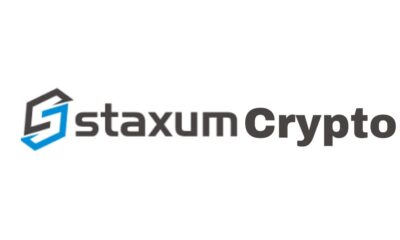Technology
“Mastering Efficiency: Navigating the Features and Benefits of SSIS 816 for Seamless Data Management”

Introduction
SSIS 816, which stands for SQL Server Integration Services, is a vital instrument in the ever-changing field of data integration. With its foundation in the SQL Server database, SSIS 816 evolved into a stand-alone platform with the goal of optimizing data extraction, transformation, and loading (ETL). Its significance stems from its capacity to smoothly coordinate the fusion of several data sources, providing better security, increased efficiency, and an intuitive user interface. SSIS 816 provides customers with a comprehensive feature set and functionalities for effective data integration and workflow applications, making it a dependable solution for enterprises navigating the intricacies of data administration.
Understanding SSIS 816
Navigating the complicated world of data integration requires an understanding of SSIS 816, commonly referred to as SQL Server Integration Services. Microsoft’s SSIS 816 tool is intended to make data extraction, transformation, and loading (ETL) easier while maintaining a smooth process. Originally included with the SQL Server database, SSIS 816 is now a stand-alone platform with essential functions related to integrating various data sources. It is important for improving data security, accelerating overall performance, and simplifying data integration procedures. In the lengthy piece that follows, we will delve deeper into SSIS 816’s installation, essential elements, advantages, and practical uses.
Definition and origins
An advanced data integration tool created by Microsoft is called SQL Server Integration Services version 816’s, or SSIS 816. It facilitates the smooth extraction, transformation, and loading (ETL) of data and is an essential part of the SQL Server database ecosystem. SSIS 816 began life as a component of SQL Server and gradually changed to become a stand-alone platform. SSIS 816’s a major player in the data management space. It gives organizations the ability to plan intricate data workflows and smoothly integrate many data sources for improved operational efficiency and decision-making.
Importance in the context of data integration
The importance of SSIS 816 in the dynamic field of data integration cannot be emphasized. SSIS 816 is a fundamental component of SQL Server Integration Services that facilitates the smooth exchange of data from various sources. Its significance stems from its capacity to optimize the extraction, transformation, and loading (ETL) procedures, guaranteeing precise and effective data integration. SSIS 816’s improved data security features help organizations by encouraging compliance and trust. The tool is a vital resource for companies navigating the challenges of contemporary data management because of its strong performance, which further enhances the efficacy of data-driven operations overall.
Core features and functionalities
SSIS 816, also known as SQL Server Integration Services, offers a comprehensive range of fundamental features and capabilities that enable businesses to handle their data effectively. Fundamentally, SSIS 816 is excellent at coordinating the extraction, transformation, and loading (ETL) process. Its control flow activities oversee the execution of workflows, while its data flow tasks move and manipulate data with ease. Connection managers provide a consistent approach to integration by facilitating communication with many data sources. The UI of this application is very user-friendly, which allows a wide range of users with different levels of technical expertise to use it.
Benefits of Using SSIS 816
-
Streamlined data integration
SSIS 816 is a great tool for efficiently integrating data; it provides a smooth solution for businesses utilizing a variety of data sources. SSIS 816 ensures a seamless information flow by streamlining the difficult process of integrating data with its user-friendly interface and strong features. Its effectiveness makes it a go-to tool for companies looking for a dependable and simplified data integration process because it not only saves time but also improves overall data accuracy and reliability.
-
Enhanced data security
SSIS 816 has made a name for itself in the data integration industry by emphasizing improved data security. SSIS 816 protects sensitive data’s integrity and confidentiality with strong encryption mechanisms and access controls. Users can feel secure knowing that their valuable data assets are protected thanks to its sophisticated security features, which not only protect data throughout the integration process but also bolster against prospective threats.
-
Improved performance
SSIS 816’s enhanced performance will provide you with unmatched efficiency.With improved data processing capabilities, SSIS 816’s speed up task execution and drastically lowers latency. SSIS 816’s is a top option for businesses looking for unmatched speed and dependability in their data management procedures because of its enhanced performance, which provides users with a fluid and responsive data integration experience, regardless of complex data transformations or large dataset management.
Common SSIS 816 Issues and Solutions
Challenges with SSIS 816’s are not unusual, and knowing how to solve them is essential for successful data integration.In order to fix these problems, users should carefully check log files for package failures, optimize data flow activities to improve efficiency, and make sure that the connection strings are correct and that the required permissions are in place for a flawless connection. Users can efficiently traverse SSIS 816’s and fully utilize its data management capability by being familiar with these typical issues and their remedies.
SSIS 816 Updates and Versions
Users of SSIS 816 are guaranteed to have access to the most recent developments in data integration technology through frequent updates and version releases. As part of its effort to improve SSIS 816’s, Microsoft plans to introduce new capabilities, strengthen security measures, and fix performance problems. It is imperative for customers to remain updated about these updates because every version adds more functionality and compatibility with modern technology. Organizations can fully utilize the power of SSIS 816’s by adopting the most recent versions of the tool, which will optimize data operations and guarantee smooth platform interaction. Updating your SSIS 816’s environment helps your data integration strategy stay current with emerging technologies while also improving the functionality of your system.
Key Components of SSIS 816
-
Data Flow Task
One essential element of SSIS 816 is the Data Flow Task, which makes it easier for data to move and change seamlessly during the integration process. With the help of this job, users can specify the sources, destinations, and modifications of the data flow. Its user-friendly interface enables users to create intricate data pipelines quickly. The Data Flow Task, which is the beating heart of SSIS 816’s, makes sure that data is orchestrated smoothly, which enhances the overall efficacy and efficiency of the data integration process.
-
Control Flow Task
SSIS 816’s Control Flow Task is a crucial element that regulates the order and circumstances of tasks in a data integration package. Serving as the orchestrator, it enables users to create intricate workflows by outlining the sensible sequence of steps. This essential role makes it possible for data integration procedures to go smoothly and guarantees that each step is completed in the correct order, which adds to SSIS 816’s overall dependability and efficiency.
-
Connection Managers
In SSIS 816, connection managers play a crucial role in facilitating communication between the integration tool and outside data sources. These elements are essential for creating and maintaining connections, which guarantees smooth data transfer. SSIS 816’s Connection Managers enable seamless information transfer, regardless of the kind of connection—web services, flat files, or databases. Users can customize these connections to meet unique needs thanks to the extensive configuration choices, which improves the adaptability and effectiveness of data integration procedures.
Integration with Other Microsoft Tools
SSIS 816 becomes even more versatile with integration with other Microsoft tools, which makes it an essential component of the data management ecosystem. Users can take advantage of the advantages of cloud computing, assuring scalability and flexibility, through seamless collaboration with Azure services. Additionally, connection with SQL Server databases promotes a unified approach to data management, allowing businesses to optimize their processes. The seamless integration of SSIS 816 with a range of Microsoft technologies establishes it as a resilient and flexible option in the dynamic field of data integration and management.
Unique advantages of SSIS 816
There are numerous special benefits that SSIS 816, or SQL Server Integration Services, offers in the field of data integration. Its user-friendly interface, which accommodates users with varying technical skills, is one of its best features. It scalability guarantees that it can adjust to changing data requirements, which makes it a great option for expanding businesses. Additionally, it improves overall operational efficiency by its smooth interface with other Microsoft technologies including Power BI, SQL Server, and Azure services. SSIS 816’s sturdy architecture makes it easier to move and change data, which enhances performance. Together, these unique advantages make SSIS 816 an effective and adaptable option for contemporary data management requirements.
Future Trends in SSIS 816 Development
The development of SSIS 816 is expected to change the data integration industry in the future. Improved real-time data processing and analysis support will become essential, allowing businesses to act quickly and decisively. Cross-platform compatibility is also becoming more and more important since it guarantees smooth integration with cloud-based services and upcoming technologies. Future developments for SSIS 816’s offer greater effectiveness, scalability, and adaptability, giving users a state-of-the-art solution to handle the changing demands of data integration in the digital age.
User Community and Support
SSIS 816’s success is largely due to its thriving user community and strong support network. Both novice and expert users can benefit greatly from the SSIS 816 user community. Online discussion boards and forums offer a venue for exchanging best practices, exchanging thoughts, and fixing difficulties. Microsoft’s specialized support channels improve the user experience even further by providing prompt help and answers to questions. The cooperative character of the SSIS 816 community creates a feeling of fraternity among members, enabling them to fully utilize this data integration tool by pooling their collective knowledge and experience.
Conclusion
Finally, SSIS 816 shows itself to be a powerful force in the data integration space, providing a solid option for businesses looking for dependability and efficiency. SSIS 816 makes data orchestration easier with its simplified installation method and essential components like Data Flow Task and Control Flow Task. The advantages, which range from better performance to increased security, highlight its importance in today’s data-driven operations. Real-world applications in e-commerce and healthcare demonstrate its adaptability. Users may fully utilize SSIS 816 if they fix frequent problems and keep up with the current releases. The future of creativity and efficiency is promised by SSIS 816, which stands as a cornerstone for integrated data management due to its easy integration with other Microsoft technologies such as Power BI and Azure services.
Technology
“Navigating the Future: How OpenAI is Pioneering Responsible AI Development”

Introduction
Founded in December 2015, OpenAI is a preeminent artificial intelligence research group whose goal is to create AI that is safe and helpful for people. OpenAI, co-founded by Elon Musk, Sam Altman, and others, seeks to guarantee that advancements in artificial general intelligence (AGI) benefit everybody. OpenAI has been at the vanguard of AI innovation and is well-known for ground-breaking innovations like the GPT series, which includes GPT-3 and GPT-4. Their contributions to the development of ethical AI have been substantial and encompass natural language processing, machine learning, and reinforcement learning. In order to guarantee openness and security, OpenAI also promotes cooperation in AI research by making many of its discoveries and resources accessible to the larger AI community.
The AI Hype and OpenAI’s Place in It
Recent breakthroughs in machine learning and natural language processing have led to a sharp increase in the buzz around artificial intelligence. A significant force in this field, OpenAI has drawn notice from all across the world for its ground-breaking models, such as GPT-3 and GPT-4. These developments not only demonstrate the promise of AI, but they also raise the bar for usability and performance. OpenAI is at the vanguard of artificial intelligence, influencing its future as consumers and companies use AI technology more and more. But with great power comes great responsibility. OpenAI is dedicated to upholding moral standards and openness in the development of AI, attempting to strike a balance between innovation and social demands, and addressing worries about how AI will affect employment and privacy.
What is an Economic Bubble?
An economic bubble is a type of market phenomena when asset values rapidly rise much above their fundamental worth due to speculative and exuberant market activity. Investors frequently display excessive exuberance during a bubble, which causes inflated values based more on predictions of future price gains than underlying fundamentals. An asset’s rising demand usually starts the cycle by drawing in additional investors, which raises prices even further. The bubble eventually bursts when prices rise to unaffordable levels, resulting in a dramatic drop in asset values and large financial losses. It is important to understand economic bubbles because, as the Dot-com boom and the housing crisis have shown, they may lead to wider economic instability, which affects both consumers and companies.
How AI Could Be Following the Pattern of Economic Bubbles
The state of artificial intelligence now is similar to past economic booms, especially with leaders like OpenAI. Reminiscent of the Dot-com bubble, many AI businesses are being valued more on future potential than on current performance as investments soar and enthusiasm mounts. A “gold rush” mindset is encouraged by this speculative enthusiasm, as businesses race to market with AI solutions that frequently lack strong underpinnings. Furthermore, if customer expectations aren’t realized, market saturation—a result of several businesses producing identical technologies—could cause a big decline. When bubbles in the past have burst because of inflated prices and overzealousness, the AI industry may suffer a similar fate if caution isn’t taken going ahead.
Signs That the AI Bubble May Burst
Several red flags suggest the AI bubble may be on the verge of bursting:
-
Overvaluation of AI companies
Investors and industry experts are seriously concerned about the overvaluation of AI businesses, such as OpenAI. There is much doubt about whether these numbers really represent the market potential given the soaring values that are being driven more by excitement than by real revenue. As a pioneer in AI research, OpenAI is under investigation for its financial viability in the face of fierce rivalry and exaggerated expectations. In order to ensure that growth is in line with actual technical breakthroughs, this scenario emphasizes the need for prudent investment methods and a more balanced approach to evaluating AI innovations.
-
Saturation of AI technologies
When we talk about the overabundance of AI tools and solutions hitting the market, we’re talking about the saturation of AI technology, especially when it comes to OpenAI. Competition increases when more businesses create comparable technology, which reduces creativity and distinctiveness. Consumer uncertainty and possible market fatigue may arise from this saturation, making it difficult for users to choose the best options. To make a name for itself in this competitive market, OpenAI will need to maintain its focus on quality, ethical development, and practical applications.
-
Unrealistic expectations
The irrational expectations around OpenAI are a result of the pervasive notion that AI is capable of instantaneously and limitlessly solving complicated issues. Many people expect AI models to function flawlessly in a variety of circumstances, ignoring difficulties such as biases, moral dilemmas, and contextual awareness. This arrogance may cause disappointment if AI falls short of these high expectations. It also emphasizes the necessity for a balanced knowledge of AI’s capabilities and limitations because the drive for quick developments may jeopardize safety and ethical issues.
OpenAI’s Role in Managing Expectations
In order to control expectations around artificial intelligence, OpenAI is essential. OpenAI, a pioneer in AI research, places a strong emphasis on openness and reality in its messaging. The company presents a fair picture of artificial intelligence that challenges the hype that is sometimes associated with it by candidly addressing the limitations and moral issues raised by the technology. For example, OpenAI has been transparent about problems like bias in AI systems and the requirement for extensive testing prior to implementation. This proactive strategy promotes public confidence and helps avoid misunderstandings. OpenAI’s posture as an accountable guardian of artificial intelligence not only sets industry norms but also fosters better understanding among developers, financiers, and the general public on the possibilities and constraints of AI technology.
The Impact of a Potential AI Bubble Burst
Potential AI bubble bursts might have a big impact on the whole IT industry, especially if they involve OpenAI. Many AI businesses may experience severe financial duress, which might result in layoffs and project cancellations, if investor enthusiasm turns to pessimism. This may discourage creativity and cause a brief halt to the development of AI. OpenAI, on the other hand, is better positioned to withstand a slump of this kind because of its solid research base and moral approach to AI development. OpenAI’s focus on sustainable development and long-term vision may help it maintain its position as an industry leader while rivals may stumble. In the end, a bubble collapse may prompt a required recalibration that would produce more reasonable expectations and solid, useful AI solutions.
How OpenAI Is Poised to Survive the Burst
OpenAI’s strategic focus on research, ethical standards, and sustainable development makes it well-positioned to weather any potential bust in the AI bubble. OpenAI places a higher priority on long-term objectives like creating secure and useful AI technology than many firms that are motivated by immediate financial gain. Their dedication to openness and solving AI’s shortcomings fosters confidence among investors and users alike. Furthermore, OpenAI is more resilient to changes in the market because to its diverse portfolio, which consists of alliances with companies in a range of industries. OpenAI can effectively handle market corrections and sustain its leadership position in the AI industry even in the event of possible downturns by consistently responding to changing market demands and upholding a robust ethical framework.
AI’s Long-Term Potential Beyond the Hype
Long-term potential for AI is enormous and goes much beyond the present buzz around platforms like OpenAI. Although AI’s immediate uses in chatbots and content creation have captured the attention of many, its real influence is seen in game-changing industries like healthcare, education, and environmental sustainability. Imagine AI customizing instruction to meet each student’s unique learning style or doing illness diagnosis with previously unheard-of precision. These developments have the potential to completely change how we address difficult global issues. Furthermore, as AI develops, it may assist in automating repetitive jobs, releasing up human creativity and problem-solving abilities. OpenAI and other industry leaders can guarantee that these technologies benefit society as a whole and pave the road for a better future by concentrating on ethical AI development.
OpenAI’s Future Vision
The goal of OpenAI’s future vision is to create artificial intelligence that is both useful and safe for people. The company prioritizes ethical issues in its quest to develop artificial general intelligence (AGI) that augments human capabilities. In order to ensure that all communities can take advantage of technology breakthroughs, OpenAI envisions a world in which AI systems are transparent, equitable, and accessible. They place a strong emphasis on working together to create strong safety standards and recommendations with the public, researchers, and legislators. In addition, OpenAI is dedicated to continuous research that tackles prejudice and privacy issues related to AI, making sure that these technologies are used responsibly for the benefit of society. OpenAI wants to create a future in which artificial intelligence (AI) enhances human welfare worldwide by promoting creativity and moral behavior.
Preparing for a Post-Bubble AI Market
It takes strategic insight and agility to get ready for a post-bubble AI industry, particularly for businesses like OpenAI. Given the likelihood of an AI bubble collapse, businesses should concentrate on developing robust business models based on practical applications. Risks can be reduced by engaging in thorough study and diversifying the products that are offered. In addition to increasing public confidence, putting a focus on transparent and ethical AI development may guarantee ongoing interest and support. Establishing partnerships with well-established sectors may also yield insightful information and stable markets. OpenAI may establish itself as a leader in an established AI sector by putting long-term goals ahead of short-term profits. This will enable it to seize new opportunities and maintain steady growth even in the face of market swings.
AI’s Role in Everyday Life
The effects of OpenAI on daily life are wide-ranging and significant. OpenAI’s technology simplifies daily interactions, from improving personal assistants like ChatGPT, which aid users with activities like composing emails to giving fast information, to changing customer service with AI-driven chatbots. OpenAI technologies in education tailor lessons and increase accessibility to difficult subjects. AI models are used in healthcare to evaluate patient data and help physicians diagnose patients more quickly and correctly. Furthermore, OpenAI’s advancements in content production provide authors and marketers more control and boost their creativity and productivity. As artificial intelligence (AI) permeates more industries, it improves productivity, encourages wise decision-making, and enriches user experiences—all of which will eventually change the way we work and live.
Conclusion
To sum up, OpenAI finds itself at a critical crossroads in the developing field of artificial intelligence. OpenAI’s dedication to responsible and ethical AI development is a beacon of hope in the face of the impending AI bubble. The company is in a unique position to overcome the difficulties that lie ahead since it prioritizes openness and reasonable expectations. OpenAI will remain resilient whether or not the bubble bursts because of its concentration on long-term objectives and practical, real-world applications. In the end, OpenAI’s novel strategy benefits society overall by improving not just its own sustainability but also the health of the AI ecosystem. The field of artificial intelligence has a bright future ahead of it, and OpenAI is leading the way.
Technology
“Unlocking Savings: Discover the Competitive Edge of Temu in Online Shopping”

Introduction
Temu is an emerging star in the e-commerce space whose exceptionally low pricing have swiftly drawn in customers from all around the world. However, how can this business maintain product quality while offering goods at such low prices? Modern technology, creative business tactics, and a constant emphasis on efficiency are the keys to the solution.The company is committed to giving customers value without sacrificing the caliber of its output. Temu’s unique business strategy, which uses cutting-edge technology, smart supplier agreements, and direct-to-consumer sales to cut costs, sets it distinct from other internet shops. Temu is becoming a popular location because to its extensive product range, which includes everything from fashion to gadgets.
Temu’s Rise in the E-Commerce World
-
The Early Days of Temu
Temu started off as a tiny e-commerce site with the goal of providing consumers on a tight budget with reasonably priced goods. Temu saw a need for premium products at more affordable costs and used direct-to-consumer sales to fill the need by providing offers that were competitive. The company began by serving local markets, but because to its customer-first philosophy and simplified business strategy, it soon became well-known. Temu’s early success laid the groundwork for its quick international growth and made it a major player in the online retail space.
- The Expansion into Global Markets
A major factor in Temu’s success has been its entry into international markets. Temu has seen exponential growth in its consumer base by reaching out to global audiences. Due to its worldwide presence, the business is able to increase operations, negotiate better agreements, and benefit from a variety of supply networks. Temu makes their great rates even more accessible to clients globally by ensuring speedier delivery and reduced shipping costs through an efficient international supply chain and localized warehousing. In the highly competitive e-commerce market, Temu’s position is strengthened by this development.
The Business Model that Drives Prices Down
-
Direct-to-Consumer Approach
The core of Temu’s business strategy is the Direct-to-Consumer (D2C) method, which enables the company to drastically reduce pricing. Temu can lower markups and operating costs by selling directly to clients instead of through middlemen, which saves money on middlemen. The items will reach consumers sooner and for a considerably lesser price thanks to this optimized approach. Temu also obtains complete control over the client experience, from product creation to delivery, which boosts productivity even more and aids in maintaining competitive rates.
-
Cutting Out the Middlemen
Temu’s capacity to cut out intermediaries from the supply chain is the key to its ability to provide incomparable costs. Conventional merchants frequently depend on agents, wholesalers, and distributors, each of whom adds a markup. On the other hand, Temu works directly with manufacturers, allowing them to drastically cut expenses. By simplifying this procedure, they are able to better regulate pricing and transfer the savings to customers, guaranteeing premium goods at very low prices. Temu’s competitive advantage stems from its straightforward approach.
Supplier Relationships and Bulk Buying
-
Temu’s Strong Negotiation Power
Temu can buy in bulk, which gives it good negotiating clout with suppliers and contributes significantly to its strong negotiating position. Temu is able to obtain significant savings that smaller businesses are unable to match by placing large purchases. The company’s capacity to provide clients with exceptional rates is directly attributed to these decreased procurement expenses. Temu also cultivates enduring partnerships with its suppliers to guarantee advantageous terms and constant product supply. Temu is able to keep its competitive advantage in the market because to this strategic approach.
-
Benefits of Bulk Buying for Lower Costs
Temu’s approach of purchasing in large quantities is essential to maintaining cheap pricing. Temu may bargain for better terms and obtain large savings by buying things in bulk straight from producers. Temu is able to provide clients with reduced prices since bulk purchase lowers the cost per unit. In addition, it helps keep the flow of goods steady, reducing the possibility of stock shortages, which can result in higher expenses. This effective purchasing strategy guarantees that consumers continuously receive reduced costs while preserving product availability.
Technology and Automation in Temu Operations
-
AI and Data Analytics for Price Optimization
Temu uses artificial intelligence (AI) and data analytics to instantly adjust its pricing policies. Temu is able to dynamically alter prices in order to remain competitive by evaluating large volumes of data on customer behavior, market trends, and rival pricing. This keeps the business profitable while enabling it to give discounts as needed. AI also aids in demand forecasting, guaranteeing that stock levels meet market demands, reducing overstock and understock problems, and enhancing overall cost effectiveness.
-
Automated Warehousing for Cost Efficiency
Temu uses sophisticated automation to save expenses and boost productivity in its warehouse operations. Robotics and AI-powered inventory management are examples of automated technologies that simplify repetitive tasks like selecting, packaging, and shipping. Order fulfillment is sped up, mistake rates are decreased, and less human work is required as a result. Temu can maintain competitive price without compromising service quality or speed by decreasing operating expenses and passing the savings on to customers. This innovation gives Temu a competitive advantage in the e-commerce space.
Scaling Up Production to Lower Prices
Temu’s capacity to increase output is essential to the company’s ability to keep costs down. Temu uses economies of scale to lower production costs when demand for their products rises. Larger production volumes enable the business to save costs per unit, which they may then pass along to customers. Temu is also able to improve its supply chain and negotiate better pricing with suppliers because to this large-scale strategy, which maintains prices competitively without sacrificing quality.
Online-Only Model with No Physical Stores
Temu’s online-only business strategy, which does away with the requirement for physical stores, allows it to flourish. Temu is able to provide customers with reduced pricing thanks to this strategy’s huge reduction of overhead expenses like rent and utilities. Temu can better spend resources to enhance its website and customer experience by concentrating only on digital sales. In addition to maintaining affordable costs, this simplified approach offers customers the ease of exploring and buying from any location at any time.
Minimal Marketing Expenses
Temu has deliberately reduced its marketing costs by emphasizing digital marketing over conventional advertising. Temu successfully reaches a large audience without having to pay the high expenses of print ads by utilizing social media platforms, influencer relationships, and focused online campaigns. Consumers who are looking for reasonably priced products without compromising quality will ultimately profit from this strategy as it not only makes marketing campaigns scalable but also guarantees that more resources are devoted to maintaining low costs.
Price Competition and Market Disruption
Temu’s aggressive price policy has fundamentally changed the retail sector, forcing rivals to reconsider their pricing strategies. Temu starts price wars by constantly providing items at far reduced costs, compelling established shops to either decrease their pricing or risk losing market share. In addition to providing consumers with reduced pricing, this competitive pressure forces merchants to improve customer experiences and expand their product offers, which spurs industry innovation. Temu can further lower prices by maintaining a lean operation thanks to its direct-to-consumer business model. Temu’s growing power will probably force the whole retail industry to become more customer-focused and price-sensitive.
Customer-Centric Strategies
Temu’s success in the cutthroat world of e-commerce may be attributed to its customer-centric business practices. Temu makes sure that customers feel heard and appreciated by constantly improving its services and product offerings by active listening to their input. Personalized shopping experiences are made possible by the platform’s use of data analytics, which offers customized discounts and suggestions based on user preferences and purchasing habits. Temu also creates a feeling of community and encourages repeat business by including customers in interactive marketing and loyalty programs. By putting the wants and preferences of the consumer first, retailers not only increase customer happiness but also foster brand loyalty. This is because satisfied customers are more inclined to make repeat purchases from them.
Sustainability and Cost-Efficiency
Temu’s cost-effectiveness approach is based in large part on its dedication to sustainability. The organization ensures long-term resource availability by cutting prices and waste associated with raw materials and placing a high priority on sustainable procurement. In addition to being good for the environment, this eco-friendly strategy also results in savings that may be distributed to customers. Temu also uses environmentally friendly packaging materials that minimize waste without compromising the integrity of the product. These procedures provide more efficient logistics and reduced shipping costs. Temu shows how being environmentally conscious can be in line with business objectives by incorporating sustainability into its core operations. This results in a win-win scenario for the environment and the customer while maintaining affordable and competitive prices in the e-commerce sector.
Eco-Friendly Packaging Reducing Costs
Temu’s dedication to environmentally friendly packaging not only saves a lot of money but also helps the environment. Temu reduces manufacturing costs related to conventional packaging by using recyclable materials and reducing unnecessary packaging. This approach improves operating efficiency while simultaneously reducing the total cost of goods. Shipping weight is decreased with simplified packing, which can result in cheaper shipping costs. Furthermore, consumers that care about the environment are drawn to eco-friendly activities, which might boost sales and customer loyalty. Temu shows that it is feasible to combine cost-cutting strategies with environmental responsibility by using sustainable packaging solutions, ultimately leading to a more sustainable future while maintaining affordable costs for customers.
International Supply Chain Management
Temu’s ability to provide exceptional costs is largely due to its global supply chain management. Temu guarantees that items reach clients effectively by cutting prices and delivery times through the optimization of worldwide shipping routes. The business uses localized warehousing techniques, putting inventories in strategic locations near important markets. This strategy reduces transportation costs and speeds up delivery, which increases client happiness. Furthermore, Temu has solid connections with suppliers and manufacturers around the globe, which makes large purchases and advantageous agreements possible. Temu is able to quickly adjust to changes in the market because it regularly evaluates and enhances its supply chain operations via the use of data analytics and innovative logistics technologies. Temu is eventually able to maintain its commitment to provide high-quality products at low pricing because to its effective supply chain system.
Optimizing Global Shipping Routes
Temu concentrates on streamlining international shipping lines to increase productivity and cut expenses. They make sure things are delivered quickly and economically by analyzing several shipping channels and travel times with the help of sophisticated logistics tools. By delivering goods sooner, this tactic not only reduces transportation costs but also raises customer satisfaction. Furthermore, Temu works with regional carriers to optimize processes, enabling enhanced tracking and more dependable service. In the end, Temu’s competitive edge in the e-commerce sector and its exceptional prices are largely due to this careful route optimization.
Challenges in Keeping Prices Low
Temu, an online marketplace that is expanding quickly, has a number of obstacles in keeping with its cheap pricing philosophy. The biggest obstacle is the variable cost of raw materials and logistics, which can have a substantial effect on overall costs. Furthermore, aggressive pricing is required to compete with well-established e-commerce companies, which frequently squeezes profit margins. Moreover, maintaining quality while reducing expenses is a challenge since subpar goods can harm a brand’s reputation. Finally, it’s critical to control consumer expectations regarding delivery schedules and level of service. In today’s competitive world, Temu has a challenging but necessary task in balancing these aspects while seeking to maintain affordable costs.
Inflation and Global Supply Chain Issues
Global supply chain interruptions and inflation have had a big effect on Temu and other e-commerce sites. Consumers see higher prices when inflation increases, which leads to changes in their purchasing habits. Supply chain issues, resulting from both demand fluctuations and logistical impediments, have simultaneously affected product availability and delivery schedules. Temu has to negotiate these challenges in order to keep its competitive advantage while offering items at reasonable prices. Risk mitigation techniques like diversifying supply networks and streamlining inventory management are essential. In a market that is changing quickly, responding to these economic forces guarantees operational efficiency while also improving consumer pleasure.
Maintaining Quality While Reducing Costs
Achieving success in the current competitive market requires striking a balance between cost and quality, particularly for platforms such as Temu. Making the most of technology is crucial to achieving this. Advanced analytics may be used to find cost-saving possibilities and optimize processes without sacrificing the integrity of the final output. Building trusting connections with suppliers also guarantees dependable quality while negotiating lower costs. Prioritizing effective inventory control and logistics lowers overhead expenses while raising customer satisfaction. User feedback loops that are regular in nature aid in delivering optimization and value preservation. Temu has the ability to successfully cut expenses while maintaining the high standards that consumers want by putting an emphasis on efficiency and innovation.
The Future of Temu in Pricing Strategy
Temu’s pricing approach will change as it continues to carve out a position for itself in the e-commerce space in order to satisfy shifting consumer needs. It is anticipated that competitive pricing will continue to be the key priority, with data analytics being used to optimize price points and improve client retention. Temu may also look at tiered pricing structures in order to serve a variety of customer groups while maintaining value and affordability. Price-conscious consumers may become more loyal if cost reductions are further enabled through strategic alliances and bulk purchases. Temu is well-positioned to fortify its position and secure growth and sustainability in a sector that is becoming more and more competitive by adopting creative pricing strategies.
Conclusion
In conclusion, Temu has become a major force in the e-commerce market and has completely changed the way that customers interact with online retailers. It serves a wide range of customers by providing a huge selection of goods at affordable costs, making shopping easy for everyone. The platform is made even more appealing by its user-friendly design and dedication to client happiness. Temu is positioned to change customer expectations and experiences in the digital market as it develops and broadens its product line. In order to prosper in this changing climate, consumers and merchants alike must embrace these changes.
Technology
“Guarding Against the WebCord Virus: A Complete Guide to Safeguarding Your Digital Assets”

Although there are numerous advantages to the digital era, there are drawbacks as well, especially in terms of cybersecurity.Targeting online communication networks and web-based programs, the WebCord virus has become a significant danger. This malware was found in the beginning of 2024, and because of its extensive effects and clever techniques, it has attracted notice quite fast. The WebCord virus, which is made to infiltrate and compromise internet services, puts sensitive data at risk in addition to interfering with system functionality. Mitigating its consequences requires being aware of how it works and being proactive.
Introduction to the WebCord Virus
What is the WebCord Virus?
A highly advanced form of malware, the WebCord Virus is made to enter computer systems and cause harm. It primarily strikes devices via software downloads from unreliable sources, malicious websites, and infected email attachments. WebCord can encrypt files, steal personal information, and even utilize the device to unleash more cyberattacks after it has gained access to a system. Its capacity to change and adapt, making it more difficult for antivirus software to find and eliminate, is one of its harmful characteristics. The virus can cause data theft, system breakdowns, and financial losses, making it a serious threat to both individuals and enterprises. The WebCord Virus is still a major threat in the field of cybersecurity because of its never-ending expansion.
How the WebCord Virus Spreads
-
Common Methods of Infection
The WebCord virus propagates by a number of techniques, but it mainly targets users through phishing emails that include harmful attachments or URLs. Users who download software from unreliable sources or visit hacked websites run the risk of their systems becoming compromised. WebCord gains undetected access to systems by taking use of unpatched vulnerabilities in out-of-date software. It can also propagate over networks, infecting more devices that are a part of the same system. The virus frequently spreads through external devices including USB drives, unprotected Wi-Fi networks, and file-sharing websites.
-
Devices and Systems Vulnerable to WebCord
WebCord virus-prone devices and systems are usually those with out-of-date software or inadequate security safeguards. This covers desktops, laptops, tablets, and Internet of Things (IoT) gadgets. Unpatched operating systems and apps are good candidates for the virus because of their vulnerabilities. Because the malware can spread swiftly across several devices, networked systems in enterprises are particularly vulnerable. These systems are especially vulnerable to WebCord infections, which can cause extensive harm and data breaches if they lack strong firewalls, antivirus software, or encryption.
-
The Evolution of the WebCord Virus
The WebCord Virus’s evolution demonstrates how sophisticated its methods of propagation are becoming. It started off using simple techniques like malware downloads and phishing emails. Nevertheless, more recent iterations take advantage of sophisticated strategies, such as malicious website scripts and weaknesses in unpatched systems. These days, WebCord can easily spread throughout networks and infect a variety of devices, including IoT devices and personal laptops. As one of the most deadly and persistent malware threats in the modern digital environment, it may defy detection and adapt to security solutions.
The Anatomy of the WebCord Virus
-
How Does WebCord Work?
Technical Breakdown
The way the WebCord Virus works is by merging a number of dangerous components, such as trojans, keyloggers, and ransomware. After it gains access to a system, it operates covertly to gather private data, including passwords and bank account details. In addition to encrypting files to prohibit access unless a ransom is paid, WebCord has the ability to use the compromised device as a component of a botnet to conduct additional attacks. It is a powerful danger because it spreads via networks, takes advantage of software flaws, and use obfuscation to avoid being discovered by conventional antivirus software.
Its Core Functions and Abilities
The WebCord virus is a complex threat with a number of essential features and capabilities. It quietly penetrates networks, frequently going undetected for a long time, and has the ability to take financial information and passwords. WebCord can also encrypt files, rendering them unreadable until a ransom is paid. Additionally, it is able to propagate throughout networks, integrating compromised devices into a broader botnet that is utilized for additional attacks. The virus is extremely difficult to identify and eradicate because it adapts quickly and avoids conventional security measures.
-
WebCord Variants and Their Differences
There are multiple variations of WebCord, each with unique traits and strategies. Their attack strategies and areas of interest diverge most from one another. Certain variations, for example, can target financial organizations particularly and use advanced ways to steal confidential financial information. Others might concentrate on encrypting material on personal devices and requesting a ransom. There are differences in the level of obfuscation and encryption as well; more sophisticated versions use sophisticated algorithms to avoid being detected by antivirus software. Comprehending these variations facilitates the customization of targeted defenses and countermeasures to efficiently address the array of dangers presented by WebCord.
-
Signs Your Device is Infected
Early detection of a malware infestation can prevent serious harm. Frequent error messages, abrupt gadget crashes, and a discernible decline in device performance are typical indicators. In addition, you could notice a rise in pop-up windows and odd adverts, as well as unidentified applications operating in the background. Files might become encrypted or unusable, and your device can start acting strangely—for example, by changing its system or displaying strange icons. It’s critical to act quickly if you see any of these symptoms. To detect and eliminate the danger, unplug from the internet and do a thorough system check.
The Impact of the WebCord Virus
-
Economic Damage Caused by WebCord
The WebCord Virus has had a significant and widespread negative impact on the economy. Due to ransom payments, data recovery costs, and operational disruptions, businesses suffer large financial losses. A company’s reputation and market position may suffer further harm from the interruption, which frequently results in a loss of productivity and consumer trust. For people, the costs consist of the cost of fixing damaged gadgets as well as possible financial losses from information theft. Because of the potentially catastrophic overall economic impact, strong cybersecurity measures are essential to reducing the threats posed by such sophisticated malware.
-
Personal Data and Privacy Concerns
The WebCord Virus seriously jeopardizes privacy and personal information. Once it has access to a device, it can steal private data, including financial information, login credentials, and personal identification numbers. This information may be sold on the dark web or exploited for financial crime and identity theft. The virus is especially harmful since it may gather and transfer this data covertly and without the user’s awareness. In addition to endangering personal security, the compromise of personal data also erodes public confidence in digital interactions, underscoring the importance of strong cybersecurity protocols and vigilant data protection.
-
Long-Term Consequences for Businesses
Businesses impacted by the WebCord Virus may have serious and enduring long-term effects. Aside from the short-term financial losses brought on by data breaches and operational disruptions, businesses also risk long-term reputational harm that can undermine client loyalty and confidence. Recoveries can be expensive and time-consuming, taking resources away from important corporate operations. In addition, if sensitive data is compromised, there may be legal and regulatory consequences. The possible loss of competitive advantage and the interruption of corporate operations underline how urgently strong cybersecurity safeguards and an all-encompassing incident response plan are needed to lessen these long-term effects.
How to Protect Yourself from the WebCord Virus
-
Preventive Measures
Best Practices for Individuals
In order to protect oneself against malicious software such as the WebCord Virus, people have to take important precautions. First and foremost, wherever feasible, activate two-factor authentication and create strong, one-of-a-kind passwords for every account. Refrain from opening attachments from unreliable sources or clicking on dubious URLs. Update operating systems and applications often to fix vulnerabilities. Installing and maintaining reliable antivirus software is also crucial, as is running frequent checks. Make careful to backup critical data as well to secure recovery in the event of an attack. By using secure surfing techniques and keeping up with the most recent cybersecurity risks, one may greatly lower the danger of infection.
Security Protocols for Organizations
Strong security procedures must be implemented by organizations to protect against online attacks. Important precautions include patching vulnerabilities and upgrading software on a regular basis to stop malware like the WebCord Virus from taking advantage of them. It is imperative that staff members get cybersecurity best practices training, such as how to spot phishing efforts and steer clear of dubious websites. In order to protect sensitive data and manage access, firms should also implement firewalls, encryption, and multi-factor authentication. Organizations may identify risks early by conducting regular security audits and keeping an eye on systems for possible breaches. Organizations may lower their risk of cyberattacks and safeguard their digital infrastructure by being proactive
-
The Role of Antivirus Software
Antivirus software is essential for defending computers and other electronic devices from ransomware, viruses, malware, and trojans. It functions by looking for patterns of known harmful activity in files and programs, then eliminating or isolating infected files before they have a chance to do harm. Real-time protection, which continuously monitors system activity to spot suspicious activity, is another feature of contemporary antivirus applications. Antivirus software often changes its virus definitions to stay up to speed with emerging dangers, such as the WebCord Virus. Antivirus software is a crucial tool for protecting data and privacy, but it functions best when used in conjunction with other security measures like frequent software updates, secure passwords, and circumspect online activity.
-
Regular Software Updates and Patching
Maintaining the security and functionality of your devices depends on applying patches and performing regular software upgrades. Patches for vulnerabilities that hackers can use to access your machine are frequently included in updates. You can defend yourself against the most recent security risks by keeping your software up to date. In addition to fixing security flaws, patches improve the program’s functionality and guarantee that it functions properly. If you don’t upgrade, spyware like the WebCord Virus—which frequently targets out-of-date software—may infect your computer. Updating and patching your operating system, antivirus program, and apps on a regular basis guarantees that your digital environment is efficient and safe from ever-changing cyber threats.
-
Using Firewalls and Encryption
Two crucial techniques for protecting digital data and systems against cyber assaults are firewalls and encryption. Between your internal network and external networks, such as the internet, a firewall serves as a security barrier that permits valid traffic while preventing unwanted access. It keeps an eye on all data coming in and going out to guard against malicious assaults.On the other hand,Encryption secures data by transforming it into an unintelligible format that can only be accessed by authorized users who possess the decryption key. This makes sure that your data cannot be interpreted by fraudsters even if they manage to have access to it. When combined, firewalls and encryption provide a formidable barrier that offers many levels of security against unwanted access, data breaches, and the protection of private, sensitive data in both personal and professional settings.
What to Do If You Are Infected
-
Immediate Steps to Take
It’s imperative that you take immediate action to reduce harm if you think your device has the WebCord Virus on it. First, unplug your device from any networks or the internet that it may be linked to. This lessens the likelihood that the virus may propagate or provide hackers access to private information. Next, use the most recent antivirus software to do a thorough system scan in an effort to identify and eliminate the malware. If at all feasible, turn on safe mode for your computer before starting the scan to minimize the virus’s activity. Lastly, record any odd behavior or infection-related symptoms for future use. If there is still breach on your system, get expert cybersecurity help to guarantee total eradication and shielding against more harm.
-
How to Recover from an Attack
After a strike such as the WebCord Virus, recovery calls for a methodical strategy. First, to stop more harm and infection, unplug the compromised device from the internet right away. Run a comprehensive antivirus scan after that to find and eliminate the infection. If the virus has encrypted your files, consider using recent backups to restore your data. Consider utilizing data recovery tools or speaking with a cybersecurity expert if backups aren’t available. Update your software and security setup after eliminating the malware to thwart such attempts in the future. In conclusion, it is recommended to update all passwords, keep an eye on bank accounts for any odd behavior, and improve cybersecurity procedures to protect against such attacks in the future.
The Future of Cybersecurity and WebCord
-
Emerging Threats Related to WebCord
WebCord’s risks are evolving along with cybersecurity. It’s anticipated that subsequent viral iterations would be more complex, employing cutting-edge strategies like deep obfuscation and AI-driven attacks to avoid detection. These updated versions may disrupt a large area by targeting cloud services, IoT devices, and key infrastructure. Cybercriminals may also use WebCord to launch multi-phase attacks that combine data theft and ransomware. Vulnerabilities in home networks may develop along with the trend of remote work, leaving people and companies more vulnerable to WebCord’s increasing threats. It will be essential to be vigilant and knowledgeable in order to mitigate these new hazards.
-
How Cybersecurity is Evolving to Combat WebCord
In order to counter the WebCord Virus’s ever-changing danger, cybersecurity is continuously developing. More advanced techniques and technologies are created to mitigate the consequences of WebCord as new variations appear. Cutting-edge discoveries including as machine learning techniques, AI-powered threat detection, and behavioral analysis are becoming important for spotting and stopping WebCord assaults before they have a chance to do damage. Furthermore, in order to keep ahead of hackers, cybersecurity experts are placing a higher priority on real-time monitoring and speedier reaction systems. Proactive measures, ongoing upgrades, and enhanced organization-to-organization coordination will be critical components of cybersecurity going forward in order to effectively combat the ever developing WebCord threat.
-
The Importance of Staying Informed
Effective protection requires keeping up with the latest developments in cybersecurity, particularly with regard to dangers like the WebCord Virus. Cyber dangers are always evolving, and so are their strategies. Staying informed about the most recent advancements and patterns in security enables people and institutions to modify their defense strategies appropriately. Timely changes to security software and protocols are made possible by knowledge of new security technology and emerging threats. This proactive strategy reduces possible damage and improves overall digital safety by ensuring that new malware varieties like WebCord don’t catch you off guard. Maintaining a competitive edge in the cybersecurity space requires constant learning.
Conclusion
With the potential to do significant harm to individuals as well as businesses, the WebCord Virus is a major threat in today’s digital environment. Understanding how it functions, recognizing its symptoms, and implementing robust security measures are essential steps in lessening its impact. You can protect your systems and data against the ever changing WebCord Virus by updating your cybersecurity protocols on a regular basis and staying up of emerging threats. Taking preventative measures, such as updating software updates, installing antivirus software, and generating strong passwords, is the best way to safeguard your digital surroundings. In the realm of cybersecurity, remember that awareness and preparedness are your best defenses against threats that are always changing, such as WebCord.
FAQs
What is the WebCord virus, and how does it work?
A kind of malware known as the WebCord virus targets web-based services and applications. It often spreads via phishing scams and malicious downloads. It is capable of data theft, system manipulation, and spread via contaminated contacts.
What should I do if I think my device is infected with the WebCord virus?
Unplug your device from the internet, use an antivirus program to do a thorough system scan, reset your passwords, and, if needed, recover data from backups. If you have a serious infection, get medical attention.
Can the WebCord virus affect personal devices?
Yeah, both personal and business machines may be impacted by the WebCord infection, which might result in compromised internet accounts and the theft of sensitive data.
What are the future trends in cybersecurity related to threats like the WebCord virus?
In order to improve defense against new attacks, future trends could expect to see developments in blockchain-based security solutions and AI-driven threat detection.
How can I protect myself from the WebCord virus?
Avoid clicking on dubious links, update your software, create strong passwords, install antivirus software, turn on two-factor authentication, and teach others and yourself about safe online behavior are all ways to protect yourself.
-

 Entertainment9 months ago
Entertainment9 months ago“Roblox R63: Revolutionizing Gaming with Enhanced Interfaces and Community Engagement”
-

 Technology7 months ago
Technology7 months ago“Navigating the Future: The Rise of Staxum Crypto in Digital Transactions”
-

 Health9 months ago
Health9 months ago“Understanding Psoriatic Arthritis: A Comprehensive Look at Symptoms, Diagnosis, and Innovative Treatment Approaches”
-

 Technology8 months ago
Technology8 months ago“Geekzilla.tech Honor Magic 5 Pro: Unveiling the Marvels of Cutting-Edge Technology”
-

 Fashion10 months ago
Fashion10 months ago“Aiyifan: Redefining Fashion Borders Through Cultural Fusion and Innovation”
-

 Business8 months ago
Business8 months ago“Decoding Pikruos: A Revolutionary Approach to Business IT Solutions”
-

 Entertainment8 months ago
Entertainment8 months ago“Asurasca: Exploring Ancient Roots and Contemporary Health Insights”
-

 Fashion9 months ago
Fashion9 months ago“Unveiling the Allure of λιβαισ: A Timeless Odyssey through the World of Fashion”

